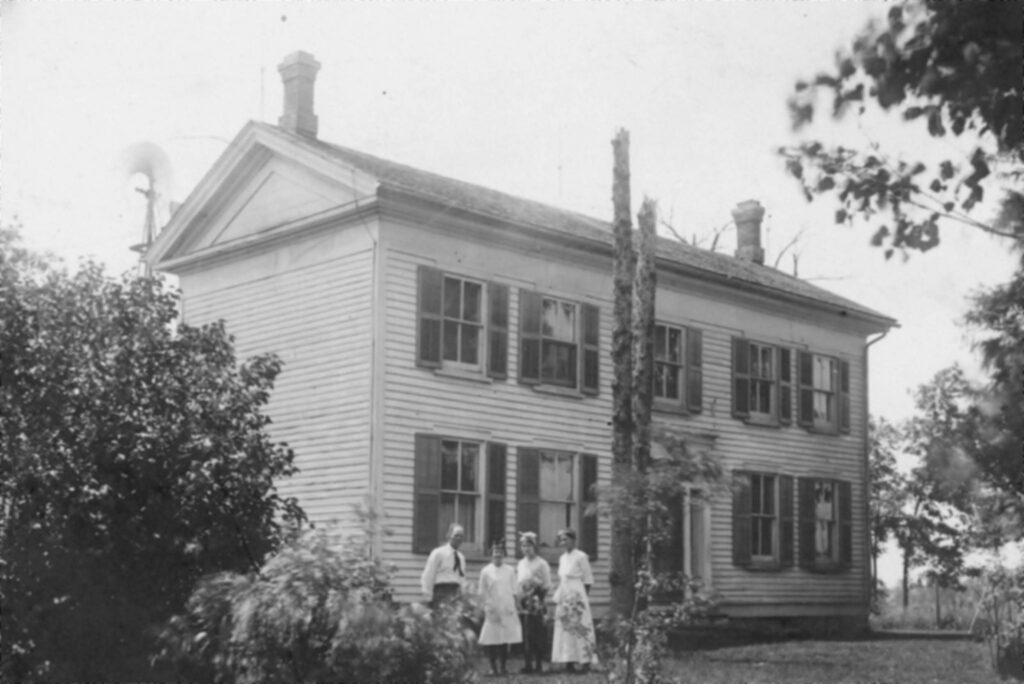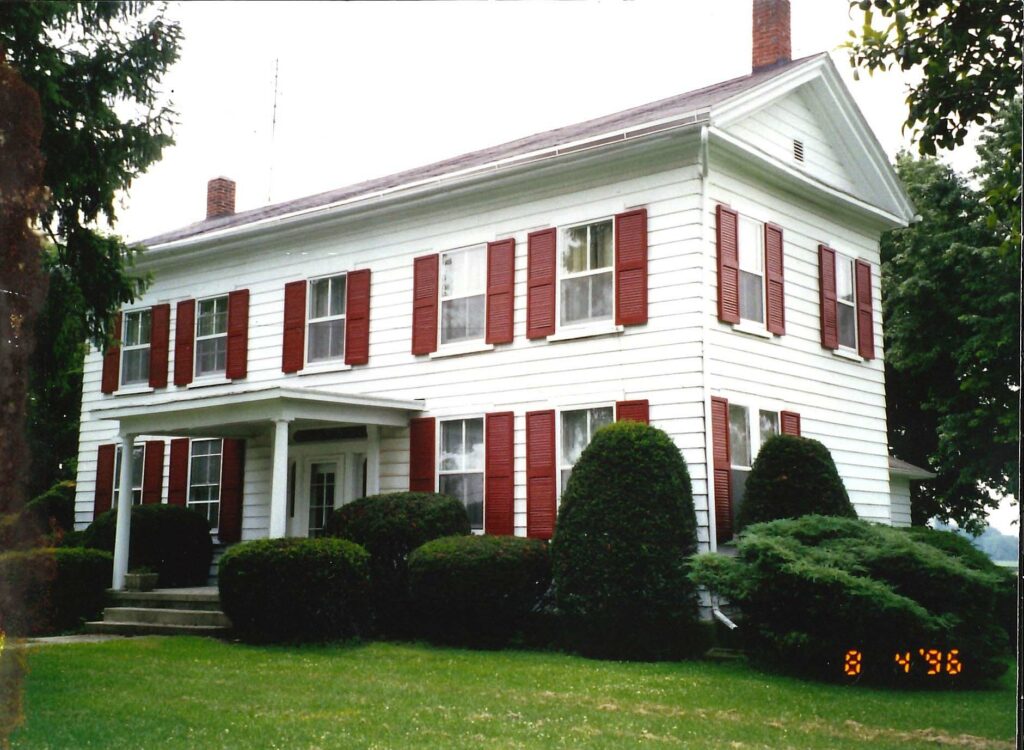

From the South Whitley Community Public Library
A Moment in Time (from the local history files at SWCPL): If the walls of the Cuppy House could talk, they would share story after story of how soldiers and slaves found comfort and care in the home of Abraham and Sarah Cuppy.
In 1837, state roads 5, 14 and 105 were nothing more than dirt wagon paths linking the newly platted town of Springfield, later renamed South Whitley, to Huntington, Fort Wayne and other areas. It was near this intersection that Abraham Cuppy felled the first log to build a home on his 572 acres that was the replica of his wife Sarah’s home in Kentucky. The house was built on top of a rise with the lowlands of the Eel River nearby. The area became known as Cuppy’s Corner.
Abraham died in 1847, at the age of 36 while serving in the state senate, leaving Sarah to raise their four children. Soon after, Sarah’s brother and sister-in-law died so she took in their five children, then added 3 more when another sister-in-law died.
Before Abraham’s death, the Cuppys became abolitionists, actively aiding runaway slaves reach freedom in Canada. The route many slaves took originated in Cincinnati, reaching the Mississinewa River and on north to the Cuppy House before heading north to Adrian and Detroit for passage into Canada.. The would hide out at Cuppys during the day and travel at night. It is believed there was a passageway between the Cuppy house and a barn across the road. Along with a safe place to stay, Sarah and her family likely fed, cared for and aided those seeking freedom.
When the Civil War began, the Cuppy family was actively involved in the anti-slavery movement. William Cuppy, Sarah and Abraham’s son, worked to enlist men to join him in Union Army. Captain Cuppy and his men assembled at the Cuppy House, marched to Columbia City where they boarded a train for Fort Wayne and soon became part of the 44th Indiana Volunteer Regiment. They were involved in battles against the Confederate Army at Fort Henry and Fort Donelson. It was in the battle at Fort Donelson that Capt. Cuppy was seriously wounded. Sarah traveled to Kentucky to care for her son and many other Union soldiers. William later returned home in poor health as a result of his wound and a bout with Typhoid Fever. Sarah continued to care for him at the family home until he succumbed to his wounds. After his death she and her daughter Martha continued to care for wounded or homeless soldiers at her home. Her work earned her the title of the Florence Nightingale of Indiana. Sarah died at the age of 87.
The Cuppy House as it appeared in 1996 and in possibly the 1920s or 30s. Standing in front of the house are Mr. and Mrs. Fred Harshbarger, Jean Harshbarger Walpole and Winifred Harshbarger.
